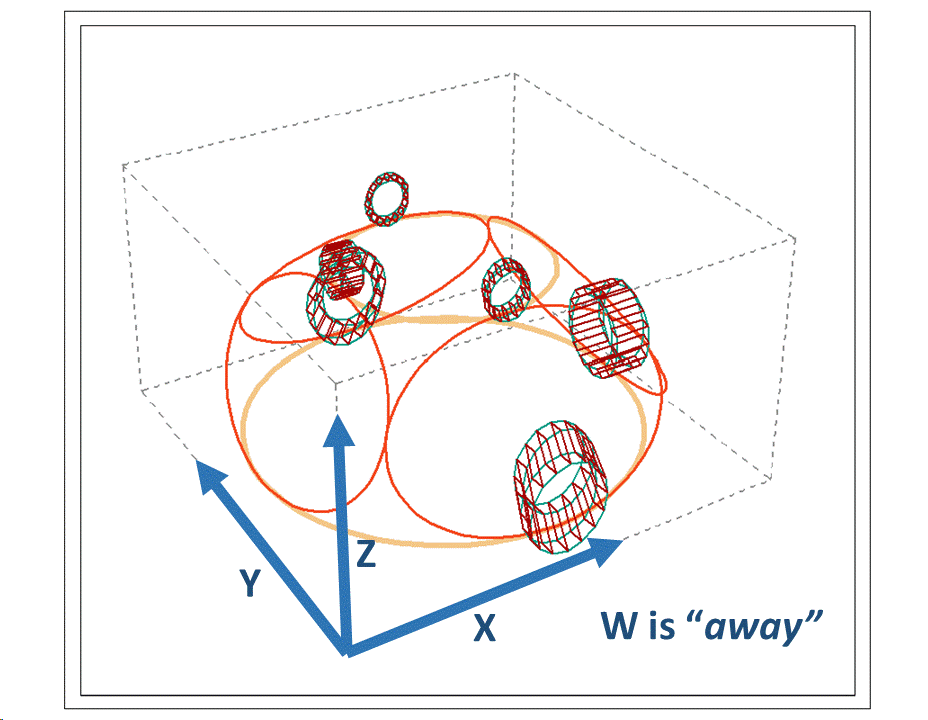
(2) Wheel Animation with added XY Rotation
This animation shows an added 180 degree XY rotation of the viewpoint.
Periodic slowing occurs as the wheels reach a point where another path may be chosen, making it easier to follow any individual wheel.


|
(2) Wheel Animation with added XY RotationThis animation shows an added 180 degree XY rotation of the viewpoint. Periodic slowing occurs as the wheels reach a point where another path may be chosen, making it easier to follow any individual wheel. |

|
Discussion--2D Slices of a 3D WorldIt is interesting that Marc ten Bosch, author of the breakthrough 4D game Miegakure credits a book published in 1884 as inspiration for his approach. The book he refers to is Flatland, by English schoolmaster and theologian Edwin Abbott Abbott. Upon examination we can see that what ten Bosch has adopted from Abbott is a deep trust in an analogy to a 2D person trying to understand a 3D world, a case that we can completely visualize, being familiar both with the world we live in and (e.g.) the world of images on paper. This is a wonderfully rich analogy on which to build. Furthermore, ten Bosch also borrows from Abbott an approach that represents the view of (e.g.) a 2D'er perceiving the 3D world as a "slice", or an intrusion into his world. The 2D'er can't really "see" me, but if I would push my finger through his world, he would see an oval shape and, looking carefully (say, using a 2D Xray machine!) might perceive a structure including surface skin and central bone. If the 2D environment contains gravity, he might also understand a rolling ball as a rolling circle, and might come to understand, after some thought, how, when the ball is not centered on his "slice", it seems to roll "above" the ground or floor. This is all beautifully explained in this video by ten Bosch. The animations in that video are immensely edifying by virtue of their technical competence and wizardry, but also due to a feature hinted at by Abbott, and which has been scarcely treated in other work to date. That feature is an effective reduction of dimensionality by breaking the symmetry in one or more dimensions. Watch for the “downward” pull of gravity and a “floor”, an apparent plane that limits motion in one direction (say “Z”). This bring us to what's new in the approach here. Might we not do one better than a slice or an intrusion? Why don't we just draw a picture of our world for the 2D'er and show it to him? And maybe we could do a little more to reduce the symmetry--to make that world a little more like our own. . . --------- |
Next Animation |
|
Previous Animation |
||
Home Page |
||